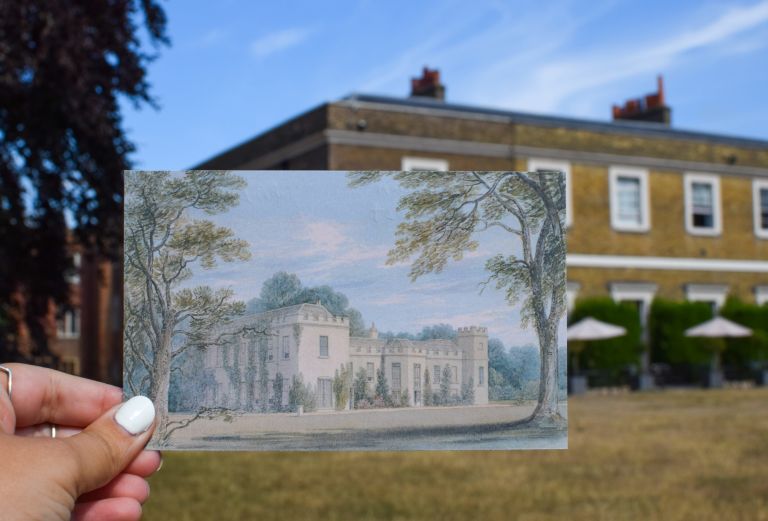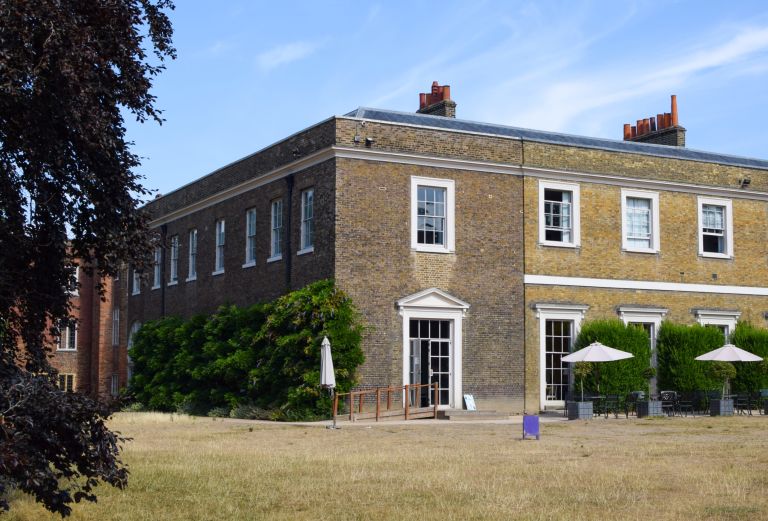
Written by Alexis Haslam, community archaeologist.
Founded in 704 AD, Fulham Palace has a long and layered history. Over the centuries, and with the arrival and departure of each Bishop of London, both the Palace building and its grounds have undergone continual change. Some bishops made small adjustments, while others transformed entire wings of the building. Yet, in the midst of all this change, certain features remain remarkably consistent.


The Palace
In 1764, the old medieval Palace and chapel were demolished under the direction of Bishop Richard Terrick, who was born in 1710 and died in 1777. To replace them, Terrick commissioned the architect Stiff Leadbetter, born in 1705 and died in 1766. Leadbetter had originally trained as a carpenter before becoming a successful architect later in life.
Ledbetter designed a new eastern wing in the fashionable Strawberry Hill Gothic style, complete with crenellations on the roof and a large bay window. This dramatic addition gave the Palace a distinctive and theatrical character.
In 1813, the architect and architectural historian John Chessell Buckler visited Fulham Palace and sketched what is perhaps the most accurate depiction of the building in its Gothic phase. He later turned the sketch into a painting. Buckler recorded many buildings that have since been lost to redevelopment, including the parsonage at St Mary Newington, a site I excavated in 2013. While working there, I discovered the gravestone of his son.
Not long after Buckler’s visit, Bishop William Howley, who lived from 1766 to 1848, made significant changes to the building. He removed the bay window and crenellations and incorporated the towers into the structure we recognise today.



The great hall
The great hall today appears much as it did in the mid to late 19th century and closely resembles the photograph taken in 1899, though with much less furniture today.
Originally built between 1493 and 1495, the hall has been altered many times. The current ceiling was installed around 1750 to 1760 by Bishop Thomas Sherlock, who was born in 1678 and died in 1761.
During his time at the Palace, Bishop Howley converted the great hall into a chapel. He added a marble floor, much of which was later moved to the current chapel. He also installed the wood panelling around the edges of the hall, reusing material from Bishop Terrick’s earlier chapel.
Later, Bishop Archibald Tait, who lived from 1811 to 1882, objected to the use of the hall as a chapel because it had never been formally consecrated. He commissioned the construction of a new chapel and restored the great hall to its intended purpose. Tait also added a new fireplace and the screen’s passage, using decorative woodwork that he had purchased from Doctor’s Commons, an ecclesiastical court that was in the process of closing.
These works were carried out by the architect William Butterfield, who was born in 1814 and died in 1900. He is well known for his distinctive Gothic Revival style.